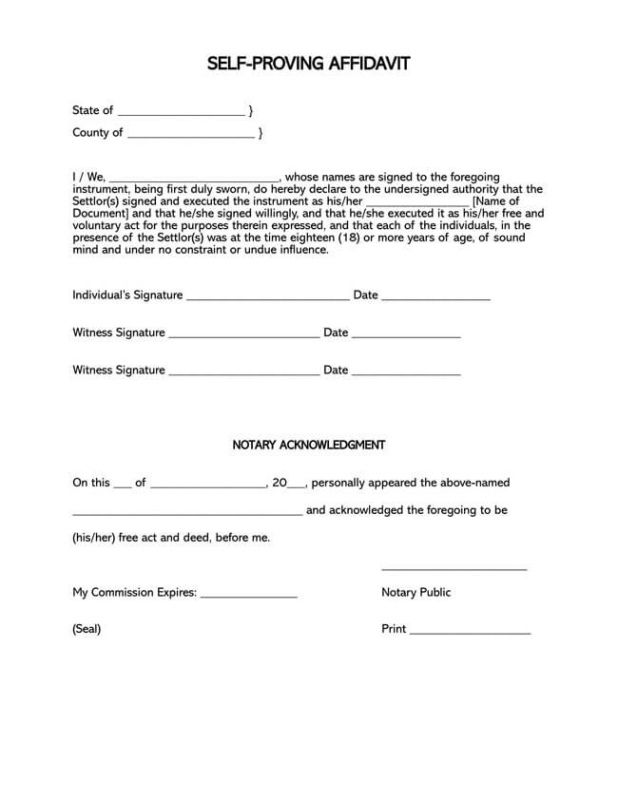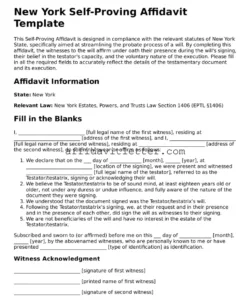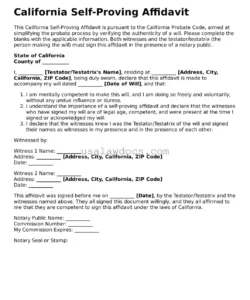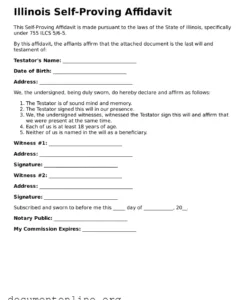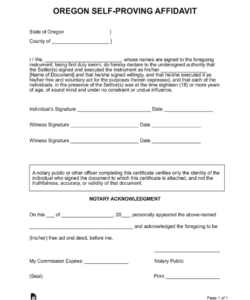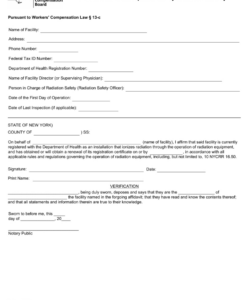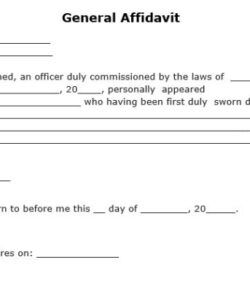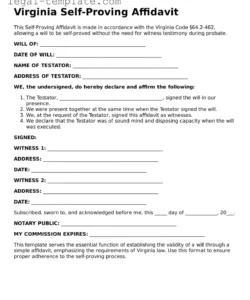Self proving affidavit for will template. Ever found yourself needing to swear something is true, formally? That’s where an affidavit is helpful. It’s a formal document made under penalty of perjury, used as legal backing in court or other legal proceedings. Think of it as your way to tell your side of the story, under penalty of perjury if you’re not truthful. But who has time to create one manually? Luckily, there are tools available to simplify the process.
Why would you even need an affidavit? Well, they’re used in all sorts of situations. Maybe you need to prove who you are, provide residency proof, or record what you experienced. Perhaps you’re involved in a legal case and need to explain your perspective. Whatever the reason, an affidavit holds legal power, so it’s important to complete correctly. It’s far more than just an informal note; it’s a formal declaration.
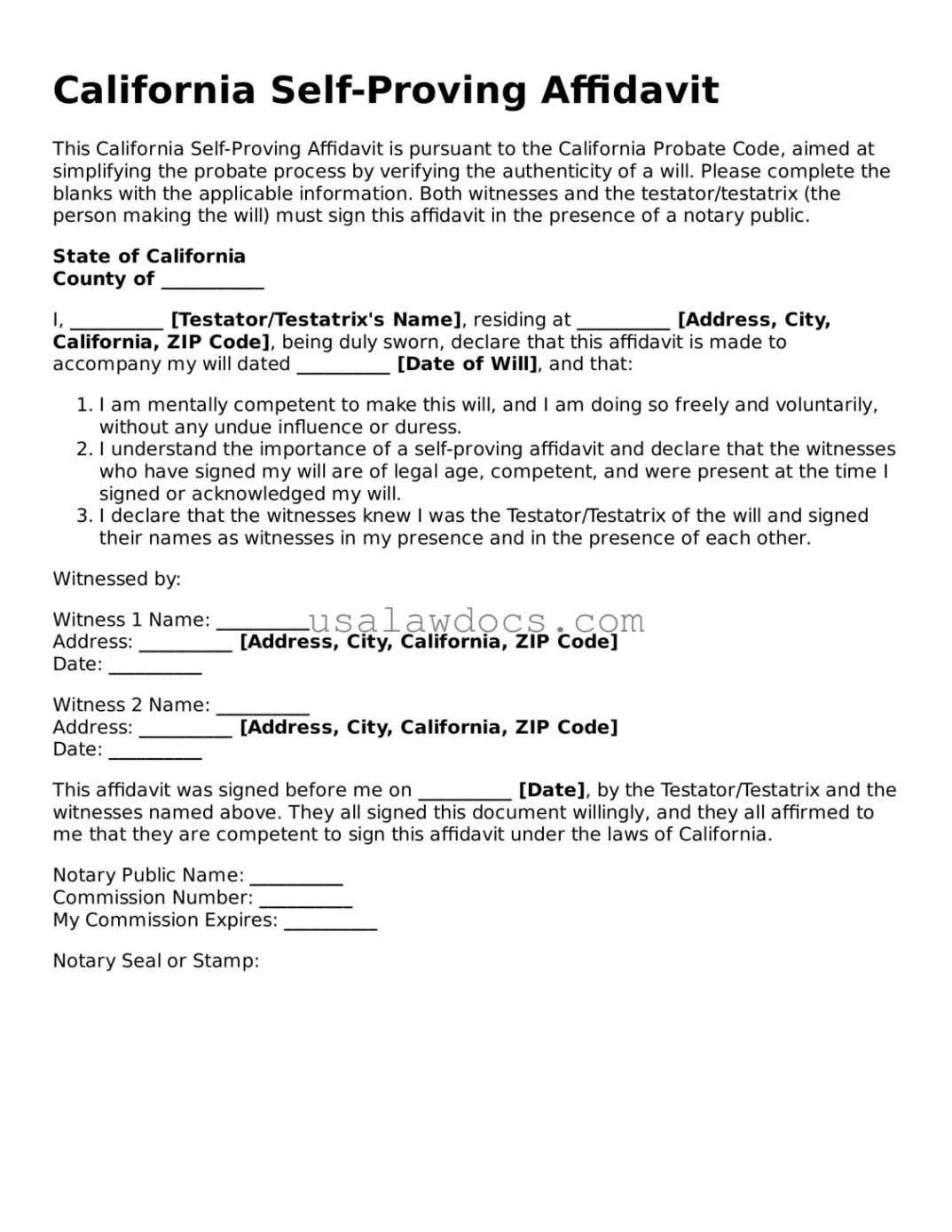
An affidavit is a document of facts that is made with a legal vow before a legally sanctioned officer, such as an oath commissioner. It’s essentially your statement of record in written form. The person making the statement is called the swearing party. The key thing that distinguishes an affidavit from a non-legal declaration is the act of swearing or affirming that the contents are true and accurate to the best of your knowledge and belief. This makes it an enforceable record, meaning that you could be prosecuted for submitting incorrect claims.
Why is an affidavit so important? Because it provides a legally documented version of events. Think about it: recollection can decline, witnesses move away, and situations change. An affidavit, created close to the time of an event, captures the details while they are still fresh in the affiant’s mind. This can be especially vital in cases where direct testimony is unavailable.
The power of an affidavit lies in its formality and the potential penalties associated with it. Because you are testifying under oath, it carries more credibility than a simple written statement. This is why it’s important to be completely sure about the truthfulness of the information you include. Verify the details, review documents, and make sure you grasp the implications of your words before signing it. Honesty and accuracy are paramount.
Before you start filling out an affidavit, it’s a good idea to identify what must be stated. Follow the directions provided by the entity requiring the form. Know the goal of the statement and the details it should include. This will help you tailor your statement and ensure that you cover everything necessary. A clear and focused affidavit is far more persuasive than a vague or disorganized declaration.
Okay, so you’ve found an affidavit template you want to use. Now what? The first step is to carefully read through the entire template to understand each component and what information is required. Be mindful of any notes or suggestions provided within the template. Don’t just glance over it; actually read and comprehend what each part is asking for.
First, analyze the form fully before you start entering your information. Pay close attention to the directions and any specific requirements outlined in the template. This is your guide for completing it correctly. Make sure the template matches the legal framework where the affidavit will be used, as legal requirements can vary widely between regions. A generalized example might not meet requirements if there are distinct statutory obligations.
After reviewing, fill in all the necessary fields correctly and fully. Don’t leave any unfilled sections! Double-check names, dates, addresses, and any other details to ensure they are accurate. Remember, an affidavit is a formal oath, and any inaccuracies could undermine its credibility. Use clear, concise language to describe the facts you are confirming. Avoid using complex or legal-heavy language that could be unclear. The goal is to make your statement clear for anyone reading it.
When your affidavit is ready, it’s time to complete the signature before an official witness. This person will confirm who you are and witness the signing, confirming that you understand the document and are swearing that the information it contains is true. Don’t sign the affidavit beforehand; it must be witnessed live by the official.
Finally, once the affidavit is signed and notarized, retain a personal version. Keep the original in a protected spot where you can retrieve it without difficulty. You bear responsibility for the affidavit’s truthfulness, even when using an affidavit template. Be prepared to answer any questions regarding the affidavit during court appearances.
It’s a good idea to confirm your state’s legal standards for affidavits. They can vary depending on location, so it’s best to be certain you’ve dotted all your i’s and crossed all your t’s. Taking the time to create a solid, truthful affidavit can make all the difference in your legal situation. By being correct, complete, and notarizing it appropriately, you’ll be well on your way to having a reliable legal statement.
